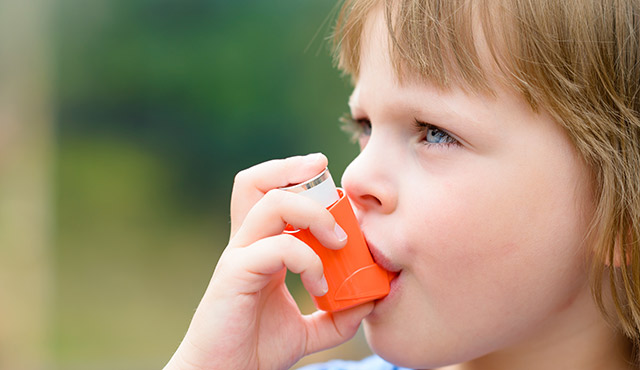When a child has an asthma attack, his or her airways become narrow and inflamed, making it difficult to breathe. Asthma can be life threatening and in 2014, children with asthma in Orange County made more than 3,000 visits to the emergency room, according to California Breathing, part of the California Department of Health.
But parents are becoming more aware of its symptoms in their children, and how asthma can be managed, says Dr. Venessa Ferragamo Gutierrez, a pediatrician at St. Joseph Heritage Medical Group in Santa Ana.
And although there is no cure for asthma, getting children checked by a pediatrician regularly can make all the difference in avoiding its worst symptoms.
What causes childhood asthma?
For some, asthma is inherited. “If there is a family history of asthma on the mother’s side, then a child can be more predisposed to getting asthma,” says Dr. Gutierrez.
According to the Mayo Clinic, exposure to air pollution or tobacco smoke, as well as being male, black, or obese can increase the risk of a child getting asthma.
“Infants who suffer from respiratory syncytial virus, or RSV, can be more predisposed to getting asthma,” says Dr. Gutierrez.
What does asthma look like in children?
“The red flags are coughing and wheezing,” says Dr. Gutierrez, whose asthma patients range from infants to adolescents. “In an older child, it tends to be a night time cough or a cough that happens with exercise. In little babies, the cough doesn’t go away.”
Children who have eczema or sensitive skin are prone to getting asthma, she adds. “Many have that triad of sensitive skin, allergies and asthma,” she says. “When children have that cross-over of symptoms, allergies can trigger their asthma.”
When to go to the ER
How to tell if a child is having an asthma attack? One sign is “belly breathing,” says Dr. Gutierrez — when a child has to use extra abdomen muscles to breathe. “You see the tummy rise and fall, rise and fall,” she explains. Another sign is very shallow breathing.
Medication called albuterol, administered through an inhaler, will open up the bronchial airways so that normal breathing can be restored. Parents of asthmatic children should have inhalers on hand and understand how to use them. Side effects of albuterol can include shakiness and being hyperactive, but these effects do not last long, says Dr. Gutierrez.
“Most times, the albuterol will work,” she says of children having an attack. “They can use this medication every 4 to 6 hours as needed to help relieve symptoms.” Sometimes, though, the constriction is so severe that despite use of the medication, symptoms persist and worsen. In this case, says Dr. Gutierrez, a child needs to be taken to an emergency room.
Asthma triggers
Understanding what triggers an asthma and then keeping a child away from those triggers whenever possible is critical.
Some culprits? Dust mites. “They live inside mattresses,” says Dr. Gutierrez, “and can set off allergies, coughing and asthma.” Dander from dog or cat hair can also exacerbate symptoms, she says. The strong odor of cleaning supplies can irritate and inflame nasal passages, can be yet another trigger, she adds.
A 2009 study published in Annals of Allergy, Asthma & Immunology showed that fluctuations in humidity and temperature also trigger asthma attacks that cause children to be brought to the ER.
Silver linings
Dr. Gutierrez is finding that parents are becoming more aware of asthma, making it easier to treat her young patients. Long-term asthma control medications can often keep symptoms at bay. And some kids outgrow asthma. “But there is no telling which kids will or won’t outgrow it,” Dr. Gutierrez says.
The most important thing to keep asthmatic kids safe? “Make sure your child has an established close relationship with your pediatrician and has regular visits,” Dr. Gutierrez says.

